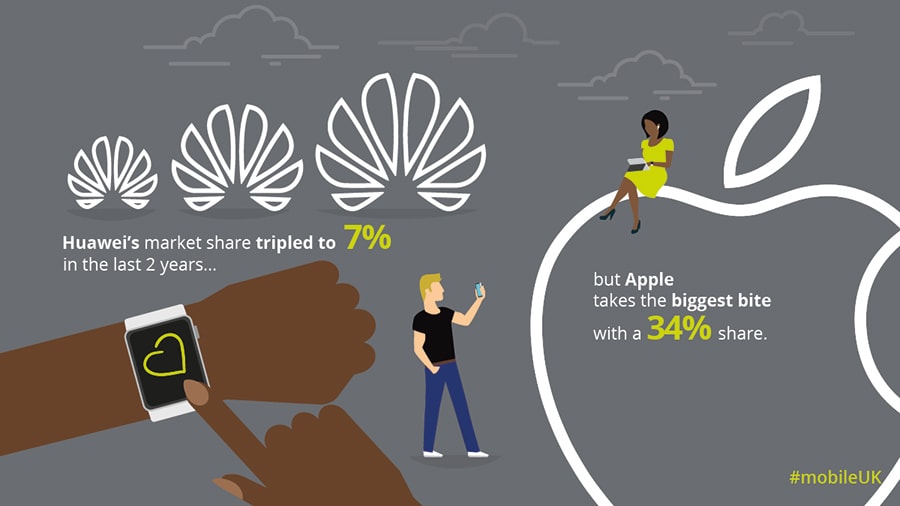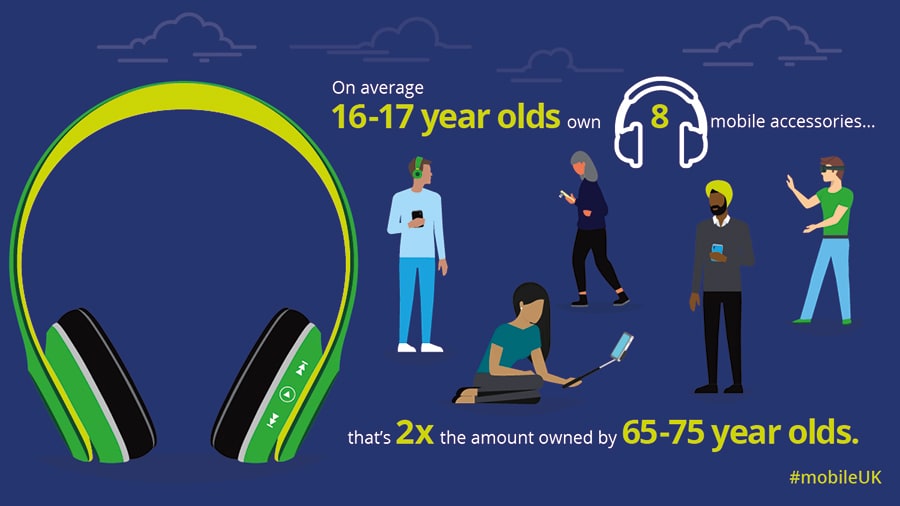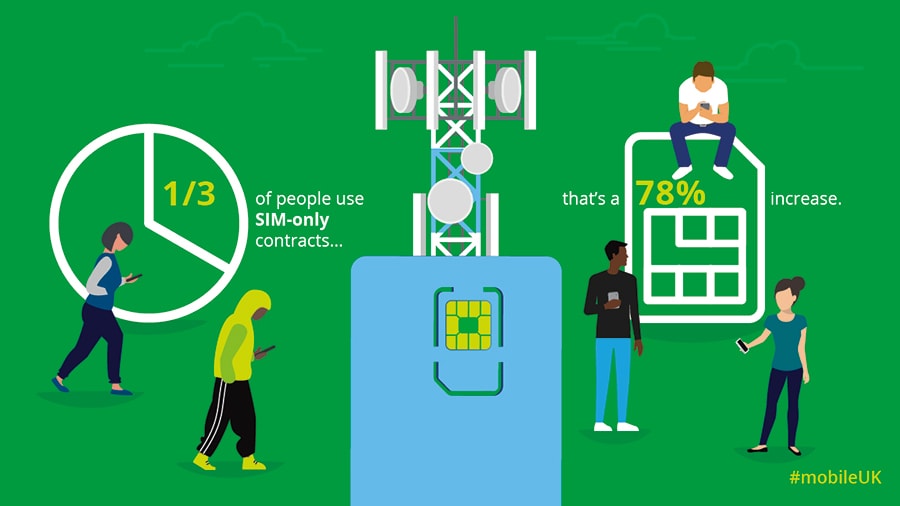The market
The market for mobile phones is changing. Adoption seems to have peaked, with only 1% recent growth, and so the smartphone has surely joined the laptop and the tablet as having reached its natural plateau. But it sits at the top of the pack as our favoured and most-used device, and it is unlikely to relinquish that position any time soon.
At the head of the smartphone market, Apple still leads the way, with a 34% market share; Samsung is in clear second place with 32%, but Huawei is the manufacturer on the move, with a share that has tripled over the past two years.
But as phone sales flatten and monthly contract sales decline – with consumers holding on to phones for longer and switching to SIM-only contracts – where does the market go next? Our study suggests the next phase of mobile consumption will come either through ramping up the use of products and services delivered via the smartphone, or through insurance, repairs and accessories.
Direct revenues generated from the sale of smartphone accessories should strengthen throughout 2019 and over the medium term. This market is known as the ‘smartphone multiplier’, and it’s likely to reach around £1.9 billion in the UK in 2020; £61.5 billion globally. Add-on products are typically in the areas of audio (headphones, wireless earbuds, speakers, etc), power (portable battery packs and chargers) and protection (cases, screen protectors).
For audio devices, the forecast is for gradual upgrades and replacements to existing kit – particularly with the shift towards wireless connectivity and enhancements such as voice assistants for headphones. And with battery degradation meaning a heavily used smartphone is unlikely to make it through the day, power-related accessories will continue to enjoy rising demand.
Putting accessories to one side for the moment, it’s worth looking at who owns what. Adoption remains strongest with 18-24 and 25-34-year-olds, among whom mobile ownership is almost universal: 93% and 94% adoption respectively. Within the previously resistant 45+ groups, adoption has leapt from 60 to 90% for the 45-54 age band, and up to 80% for the 55-75 band.
Not only does adoption vary by age, it also varies by usage. The younger age band (18-34) grew up with smartphones as their primary device, whereas older groups would have used laptops (35-44 band) or desktops (45+ band) when these first became widely available. That familiarity continues to steer preferences, with the older groups tending to use laptops and desktops rather than smartphones for shopping and banking. The younger age groups are also predisposed to buy products in the accessories market, such as premium headphones and screen protectors.
So what lies ahead? The fact remains that 88% of UK adults have access to a smartphone, and 95% of smartphones are used every day. This presents great opportunities for suppliers of digital products and services optimised for mobile, or for peripherals that use the smartphone as a hub – fitness trackers, smart watches and remote items such as security cameras and smart lighting.
As 5G also opens up the market for a new range of services, smartphone vendors and mobile operators are likely to put even stronger emphasis on these lucrative secondary markets. Content providers, banks, retailers, central and local government, and indeed every other sector will look at how to grow revenues from the vast base of smartphones owned by UK consumers.






